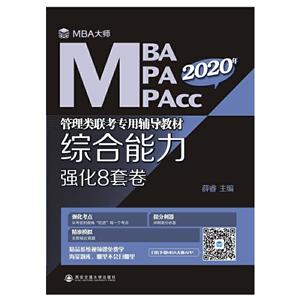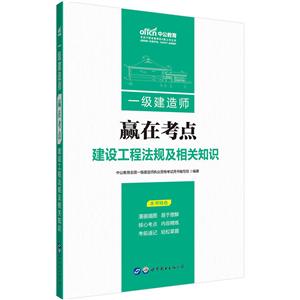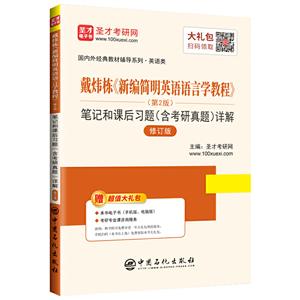冲突.碰撞与趋同下的中西文化

|
冲突.碰撞与趋同下的中西文化作者:祝吉芳 开 本:32开 书号ISBN:9787301272718 定价: 出版时间:2016-07-01 出版社:北京大学出版社 |
冲突.碰撞与趋同下的中西文化 本书特色
在客观再现中西方学者有关中西方文化差异研究成果的基础上,本教材具体内容以近年来的大量跨文化交流案例为横线,以下述五个部分的内容为纵线,全面而审慎地展开:中西文化对比的意义; 无声语言与文化差异;思维与文化差异;价值观与文化差异;文化本位差异。视野较宽:21世纪的英语教学不应仅局限于语言层面,应该把视野扩大到文化层面,因此本教材还强调文化差异意识及敏感性的培养。涉及面广:本教材综合了英汉语言学、翻译学、文化学、文化交流学、人类学、史学等学科知识,比同类教材更重视学生对所学知识的综合运用。时代感强:今日学生的文化交流能力,特别是文化视野更为宽阔,因此本教材案例力求时代感强。
冲突.碰撞与趋同下的中西文化 内容简介
本书由"东方与西方""不同的无声语言""不同的思维方式""不同的文化取向""不同的文化本位"五大部分组成,每部分由不同章节构成,共20章,有针对性地对冲突、碰撞、趋同语境下的中西文化进行对比研究,总结其差异,挖掘差异背后的影响因素。另外,中国文化长期以来广纳百川,西方文化兼收并蓄,以静态的文字对动态的中西文化进行比较难度很大,有鉴于此,本书聚焦中西文化中传统而稳定的部分,通过案例进行比较,以助读者了解中西文化的异同并能用新的眼光审视自己的文化。
冲突.碰撞与趋同下的中西文化 目录
contentsforeword…1part i east and westunit 1 why contrasting chinese and western cultures?…2i. ancient civilizations and cultures…2ii. cross-cultural comparative studies in china…4iii. imperatives to contrast chinese and western cultures…7iv. a note on some key concepts…11unit 2 traditional characteristics of chinese and western cultures…14i. “there are all kinds of birds when a forest gets large”…15ii. traditional chinese cultural characteristics…17iii. traditional western cultural characteristics…24unit 3 affinities across cultures…29i. an unexpected affinity…30ii. reading for more cultural affinities…30iii. a note on some key concepts…38part ii cultural differences in silent languagesunit 4 time…43i. time in china and the west…44ii. two time modes…48iii. past-oriented societies vs. future-oriented societies…54iv. two time orientations…57unit 5 space…61i. spatial language…62ii. spatial language and culture…65iii. spatial language and life…71iv. changes we cannot afford…73unit 6 smiles, nods and silence…75i. smiles…75ii. nods in the intercultural communication…80iii. silence in the intercultural communication…82part iii cultural differences in thinkingunit 7 intuitive vs. logical thinking…89i. definitions of intuitive and logical thinking…89ii. philosophy and thinking…90iii. application of the two thinking modes…94iv. impact of thinking modes on writings…98v. logic in china and intuition in the west…100unit 8 dialectical vs. analytical reasoning…104i. proverb preferences across cultures…104ii. dialectical reasoning…105iii. analytical reasoning…109iv. more about the two reasoning modes…113unit 9 holistic vs. atomistic visions…116i. a detention room incident…116ii. prominent attributes of holistic and atomistic visions…117iii. vision and cognition…122iv. vision and language…123v. zhengshan xiaozhong and lipton black tea…128unit 10 categorizing objects by relationships vs. by attributes…131i. two ways to categorize one person…132ii. principles to categorize objects…133iii. how to categorize objects and why…135iv. impacts of different ways of categorization…137v. causal attribution differences out of different categorization ways…140unit 11 non-controllers vs. controllers…143i. too early to tell…144ii. why so different stances towards life…144iii. “being” and “doing” cultures…149iv. manifestations of “being” culture and “doing” culture…153part iv different cultural orientations unit 12 the introvert-oriented vs. the extrovert-oriented…160i. personality types…160ii. personality types of cultures…162iii. effects of personality types on pattern preferences…166iv. a contrast of cultural phenomena…171v. the trend of the introvert-oriented chinese culture…175unit 13 collectivism vs. individualism…177i. an embarrassing habit…177ii. collectivism and individualism as cultural orientations…179iii. collectivism and individualism in cultural anthropology…183iv. collectivist and individualist perspectives of “self”…185v. interdependence vs. independence…189unit 14 femininity vs. masculinity…193i. gender traits…193ii. feminine chinese culture…195iii. masculine western culture…201iv. why so different?…205v. the trend of cultures and its potential impact…208unit 15 advocacy of jing vs. dong…211i. introduction to two concepts…211ii. jing advocacy of china…213iii. dong advocacy of the west…221iv. differences and discomforts…225unit 16 implicitness vs. explicitness…229i. “half a story”…229ii. implicitness and explicitness of language…231iii. implicit chinese…234iv. explicit westerners…241v. high context vs. low context…244vi. “chicken and duck talk”…247part v different cultural standardsunit 17 peace vs. conflict…253i. great names and different cultural standards…253ii. external factors and cultural standards…258iii. cultural standards and their unique products…260iv. better ways to know each other…265unit 18 egalitarian and inegalitarian distribution…268i. hate-the-rich mentality…268ii. chinese-style egalitarianism…269iii. western-style inegalitarianism…272iv. egalitarianism and inegalitarianism in china and the west…274unit 19 good vs. evil human nature…279i. definitions of key concepts…280ii. human nature and education…281iii. theorization of assumptions about human nature…283iv. human nature theories and the rule of ethics vs. law…288unit 20 rule of individuals vs. rule of law…290i. an unexpected complaint…290ii. rule of individuals in traditional chinese thought…291iii. rule of law in western thought…296iv. rule of law in china…30bibliography…305
教材 研究生/本科/专科教材 文法类
在线阅读
- 最新内容
- 相关内容
- 网友推荐
- 图文推荐
上一篇:跨文化交际教程
下一篇:医用物理学-(供五年制临床医学专业用)
零零教育社区:论坛热帖子
| [高考] 2022 西安电子科技大学《软件工程》大作业答案 (2022-04-25) |
| [家长教育] 孩子为什么会和父母感情疏离? (2019-07-14) |
| [教师分享] 给远方姐姐的一封信 (2018-11-07) |
| [教师分享] 伸缩门 (2018-11-07) |
| [教师分享] 回家乡 (2018-11-07) |
| [教师分享] 是风味也是人间 (2018-11-07) |
| [教师分享] 一句格言的启示 (2018-11-07) |
| [教师分享] 无规矩不成方圆 (2018-11-07) |
| [教师分享] 第十届全国教育名家论坛有感(二) (2018-11-07) |
| [教师分享] 贪玩的小狗 (2018-11-07) |






